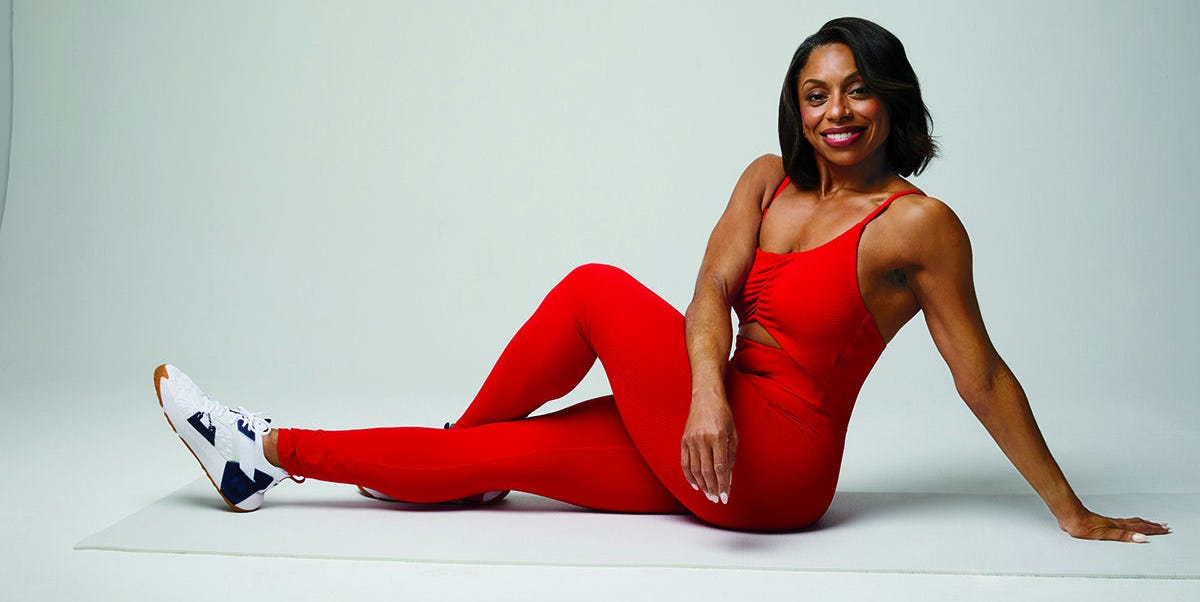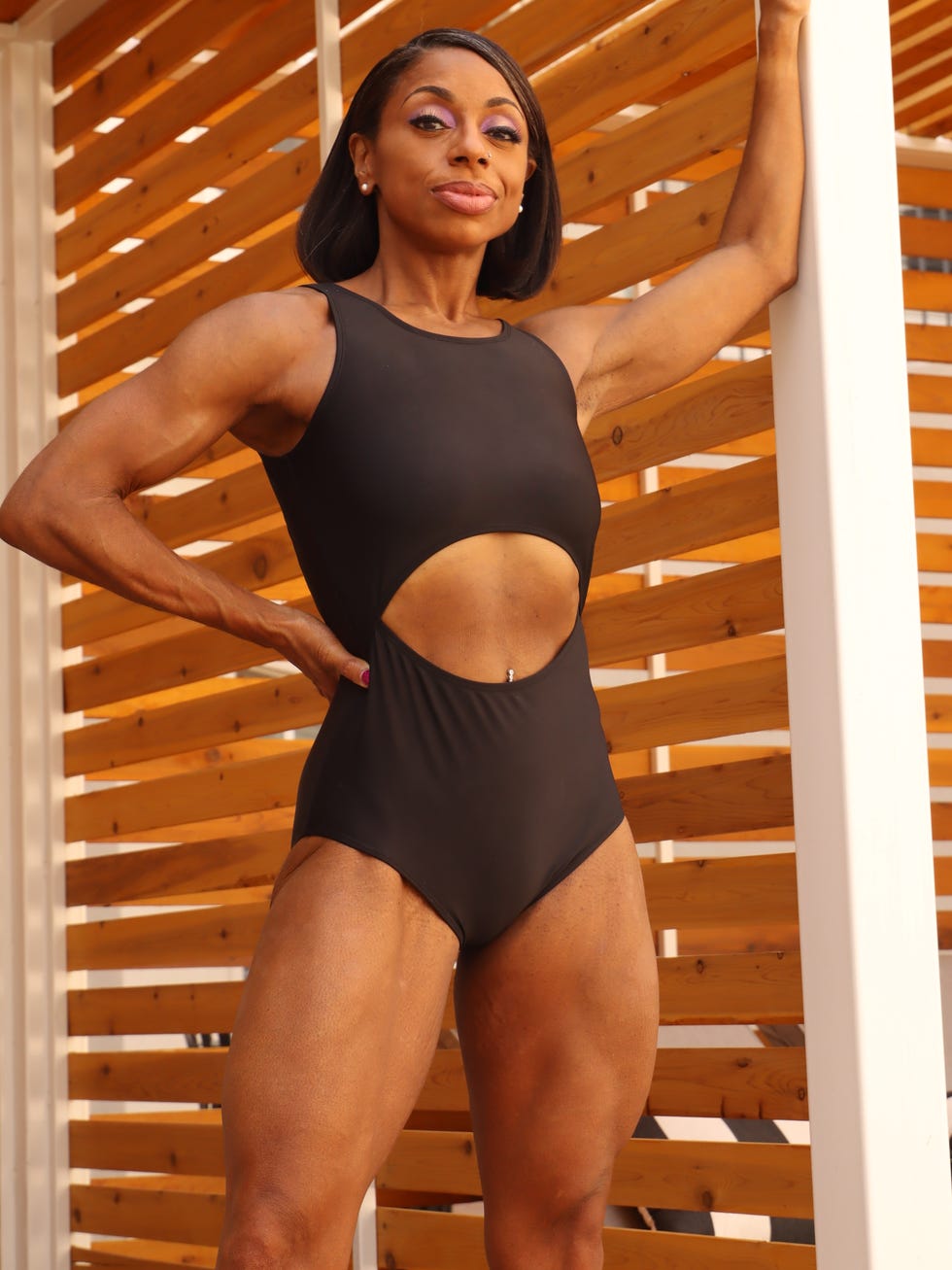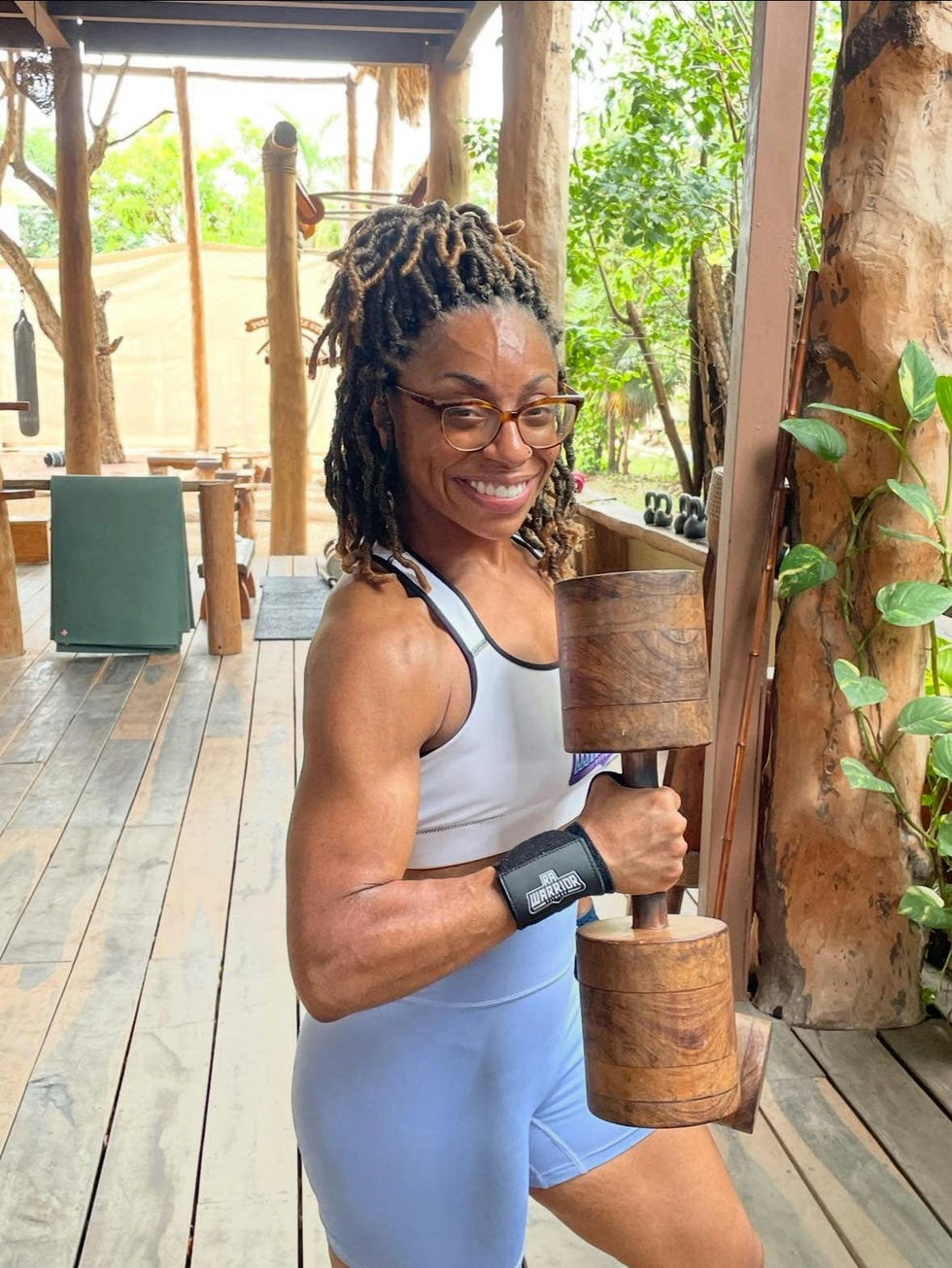Back in 2021, I shared my story of how I lost 65 pounds and decided to become a personal trainer. To catch you up: After I was diagnosed with rheumatoid arthritis (RA) at 27, I really started getting serious about my health and wellness because I knew that getting some of the weight off of my body would help reduce inflammation and joint pain. I fell in love with the process, and at 34, I got certified as a personal trainer.
Now, at 41, I’m the author of WH’s Strong & Fit After 40 with the goal of helping other women get into the best shape of their lives. I’m living proof that you can undergo strength transformations multiple times in your life, at any age.
So, I’m sharing my chapter two.
Follow my 28-day workout plan here
Today, I’m the strongest I’ve ever been—and I built the body I always dreamt of.
When I began my most recent journey—with a goal of gaining muscle at 40—I had a different level of baseline health and fitness knowledge compared to years ago. I knew that as we age, especially as women, we lose muscle mass. My rheumatoid arthritis was still the driving force for me to build muscle because it would help support my joints long-term, but it was not just my autoimmune condition that threatened my muscle mass. Women also experience muscle loss and bone density decline throughout menopause and perimenopause—and all of these factors acted as motivation.
After I was first diagnosed with RA in my 20s, it took time to learn how to modify exercises so that they worked for my body. But fast-forward to my late 30s, and I had a new confidence and strength that made me brave enough to finally chase my next goal, so I signed up for a bodybuilding competition.
I’d wanted to compete for years, but things finally clicked for me mentally in December 2021. I already knew I wanted my trainer, Felicia Cox, to coach me because I saw her build her body back from scratch after an extended illness. She understood that I had some physical limitations with RA and graciously made sure I had modifications when needed.
Training for my first bodybuilding competition was more of a mental challenge than a physical one. I had to truly mentally prepare to eat a strict diet and spend hours on weight training, cardio, posing practice, and getting enough sleep (including naps during the day) all while working and running a business. It was *tough* but it all paid off once I graced the stage and earned my pro card in the summer of 2022.
By the time I hit 41, I had put on more muscle mass than ever in my life.
I couldn’t believe I was a professional bodybuilding athlete. And it was through that process that I really learned more about my body and how strong it truly is, even despite having RA.
There were some days when I had to take more rest days than I wanted because my body required more rest and recovery due to the stress on my joints and extreme fatigue. With much prayer and belief in myself, I kept going until my vision became a reality. I’m stronger mentally and physically because of bodybuilding. I have a level of discipline that I never knew existed.
Become a Women’s Health+ member today to get your free copy of Strong & Fit After 40 and unlock our full library of exclusive challenges and fitness and nutrition.
At first, I competed in the Figure divisions, but I realized that my upper body was going to be a little bit harder to build because my RA is in my hands, so I couldn’t lift very heavy. I switched over to the Wellness category, which focuses more on the glutes and legs. I placed in those categories and got first and third place in 2023.
Ever since then, I stayed focused on building muscle. While I’m not in competition prep currently, whenever I do get into that mode, I’m going to have a lot more muscle mass than I did in 2022 and 2023. I’m loving the definition that I have now, and people actually look at me and say, “Wow, you work out!” or, “You have strong arms.”
At 41, I am the fittest and strongest I’ve ever been, and I have that strong look I wanted.
Staying dedicated to a consistent routine has made the biggest difference in seeing results.
Since turning 40, things in the gym got easier because I developed a strategic regimen (which I share in my book!). It became a part of my lifestyle. I didn’t miss my appointments with myself at the gym because I knew that that is important.
I trained five solid days a week, and I saved my two rest days for the weekend.
Follow my Strong & Fit After 40 workout plan here
Mondays and Thursdays, I did back and shoulders. Tuesdays and Thursdays, I did biceps, triceps, and chest. Wednesdays, I did legs. And, let me just keep it real: I tended to workout on Saturdays too, which is when I did another legs session. (But, I wasn’t afraid to work in a rest day, especially if my joints needed it.) I did anywhere from five to six different exercises for four sets each. Most often, I did six because I like to superset them for the sake of time and effectiveness.
I also incorporated at least one glute exercise every day because those were a priority for me right and sprinkled my cardio and core work in daily, whether they’re part of my warm-up or in between sets.
I’m not really tracking or chasing any PRs, but I am proud of my 360-pound leg press. Really, my ultimate goal was just to become stronger than I was the day before.
3 The Lessons I Learned About Strength Training At 40
I use all of these lessons and more in my book.
1. Give yourself plenty of time to reach your goals.
Before my first bodybuilding show, I lost 40 pounds and, of course, built muscle—but that took time. That was seven months worth of prep to get to the stage. It took time and consistency every single day down to what I ate, how I trained, and how I slept.
It takes time to become stronger and for your body to change. If you’re planting seeds for a garden, you can’t expect to eat the fruit the next day. It’s the same with building your body. It takes time and consistency, and you’ve got to continue to put in that time in order to see the results. When you rush things, then that makes you more prone to mistakes or injury, but when you are taking your time and you have a solid plan and you’re consistent, you’ll get those results that you desire.
2. You don’t need to spend hours in the gym.
When I’m not in competition prep, I don’t have to spend nearly as much time in the gym as I did when I was getting ready for the stage. Let’s just be real: being in competition prep and getting on stage is not a realistic thing to do every single day. It’s so strict and being at such a low body fat percentage is not healthy. Now that I am just trying to maintain a healthy body, I’ve learned that I can spend 30 to 45 minutes doing a solid workout, like what I’ve written in my book, to maintain and to continue to grow stronger. If you can be consistent with 30 to 45 minutes a day, then that’s sustainable for a lifetime.
You don’t have to make your workouts very difficult or long. You don’t need hours in the gym. As long as you are effective and your form is correct and that you’re doing these exercises as they’re written, you will become stronger.
3. As you age, functional training becomes that much more important.
I always say that I’m training for when I’m 51, 61, and 71. I want to continue to be self-sufficient to be able to carry my groceries, pick things up off the floor, go from sitting to standing, lift my luggage into the overhead bin on the airplane, and do all other kinds of everyday functional movements with ease.
Functional training, which mimics movements you do in everyday life, is the key to making all this happen. I prioritize it in my own programming, especially when it comes to working the shoulders. I love to travel and I like to be able to put my own bag in that overhead bin, so I do my shoulder presses. I want to be able to carry my groceries in just one trip, so I work on farmer’s carries. All these moves help me stay functional in and out of the gym, and will into my older years.
Age is truly just a number and you have control over how you age based on the habits that you do every day, so prioritizing not only the exercise part, but what you’re putting in your body, what you’re listening to, all of that plays into how you age. With the right programming, I learned that you can get fit at any age and it’s never too late.
Read the full article here






